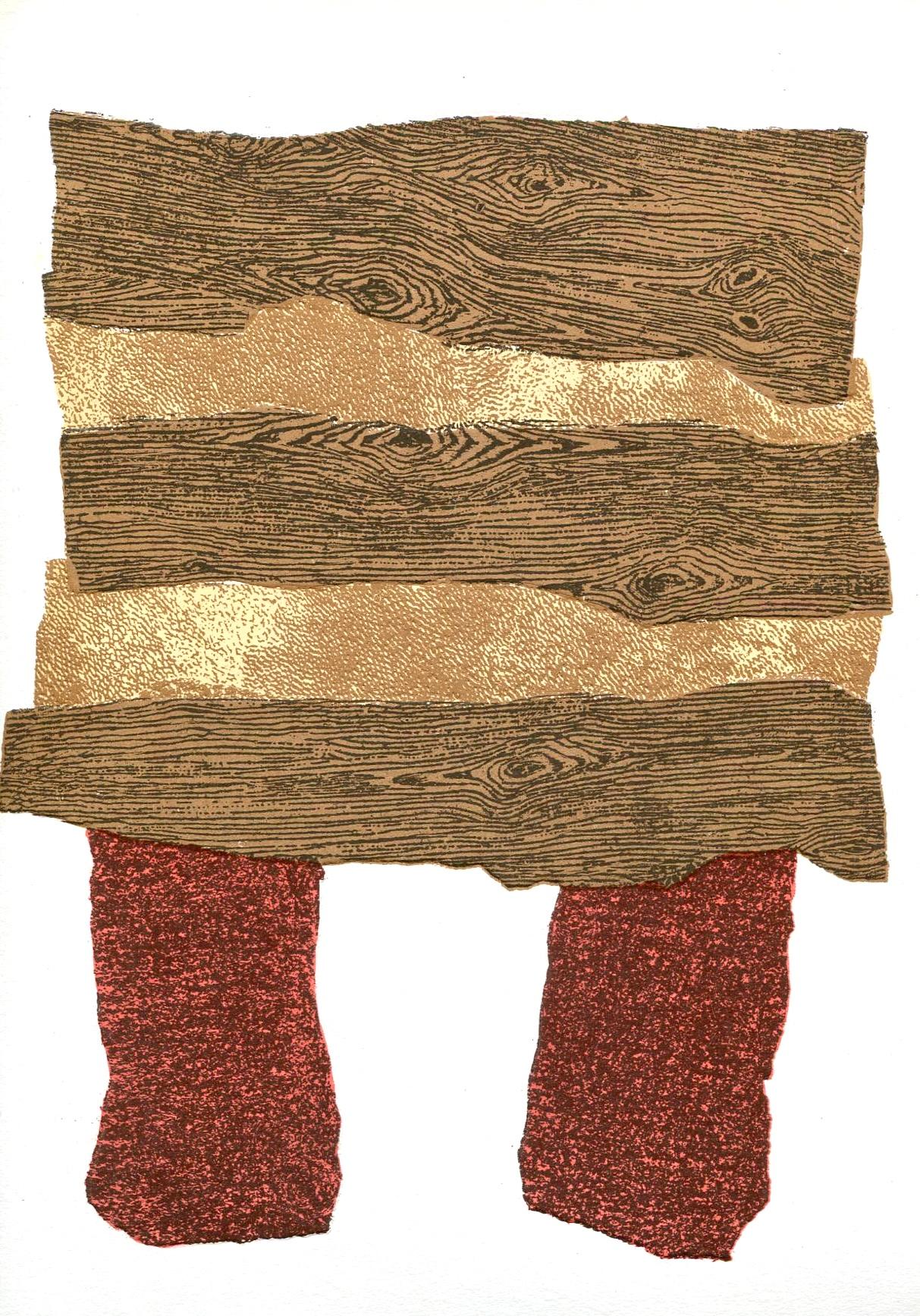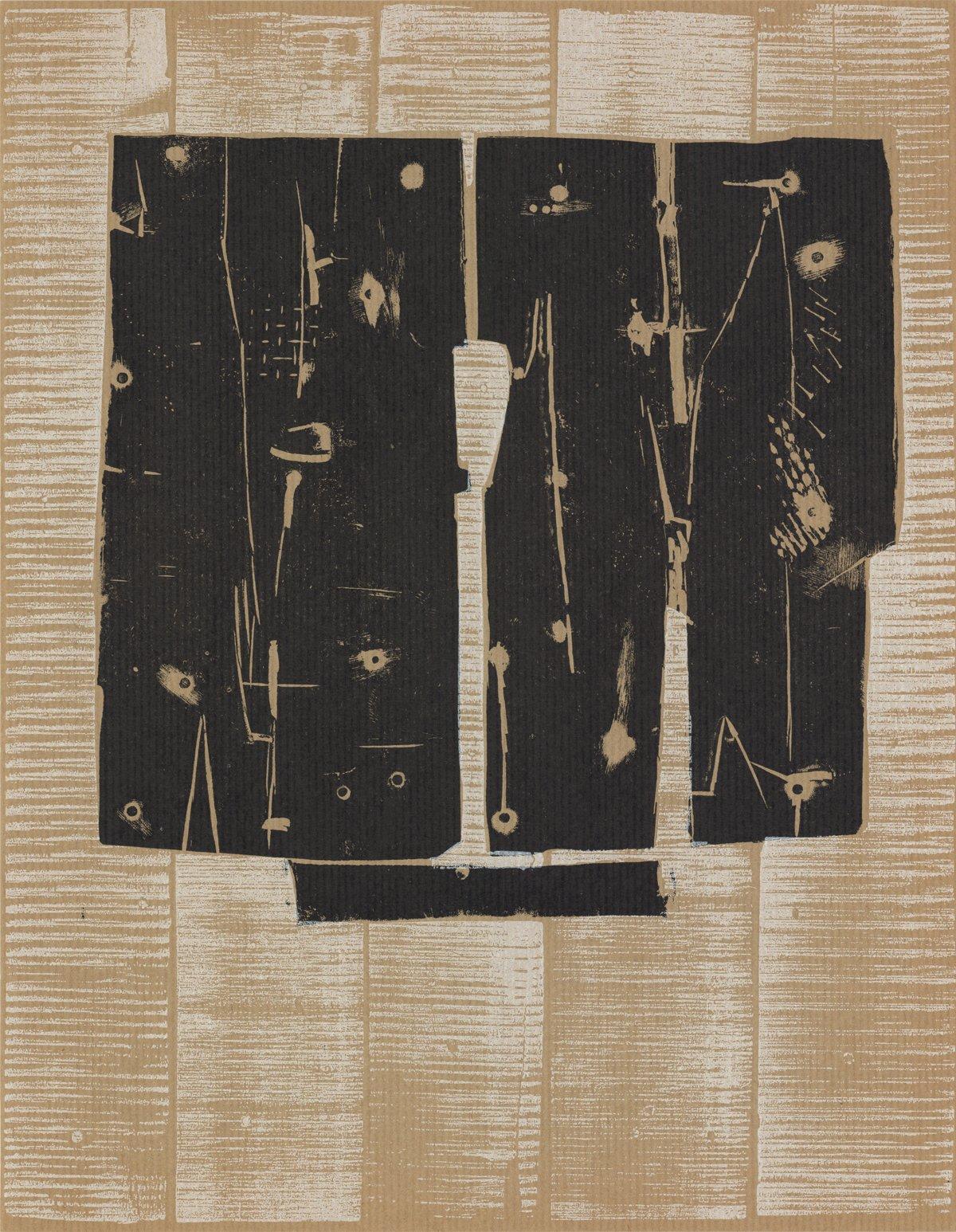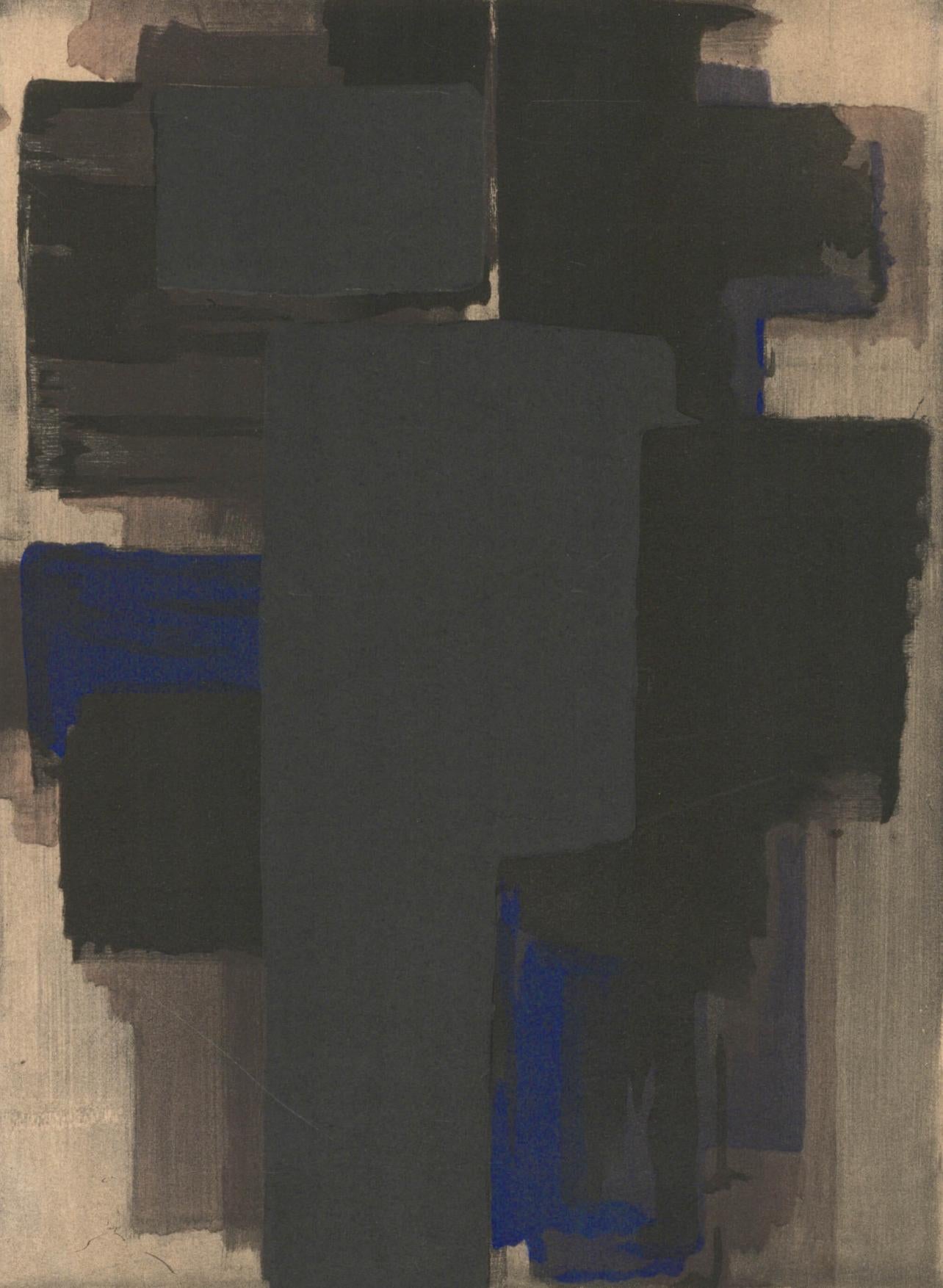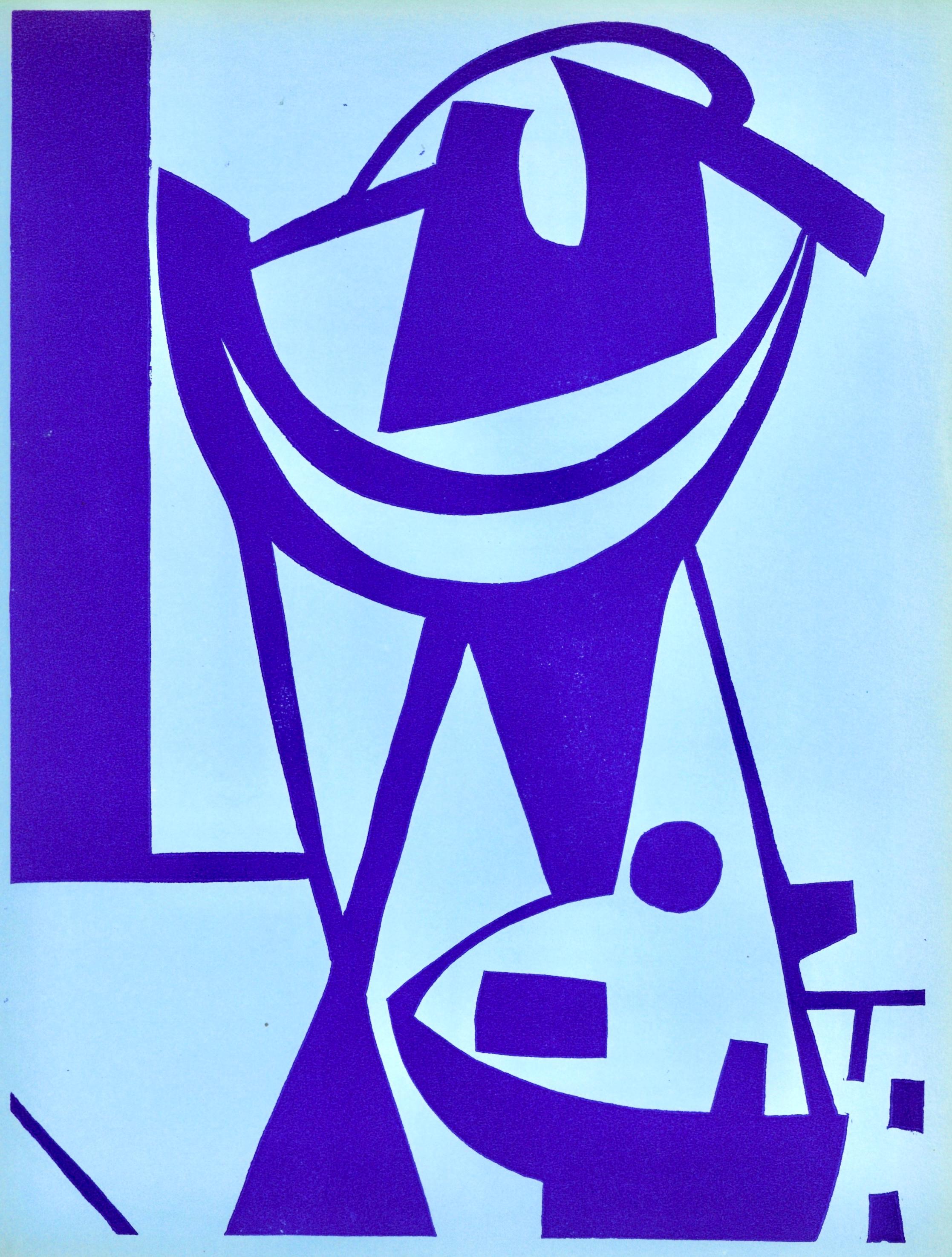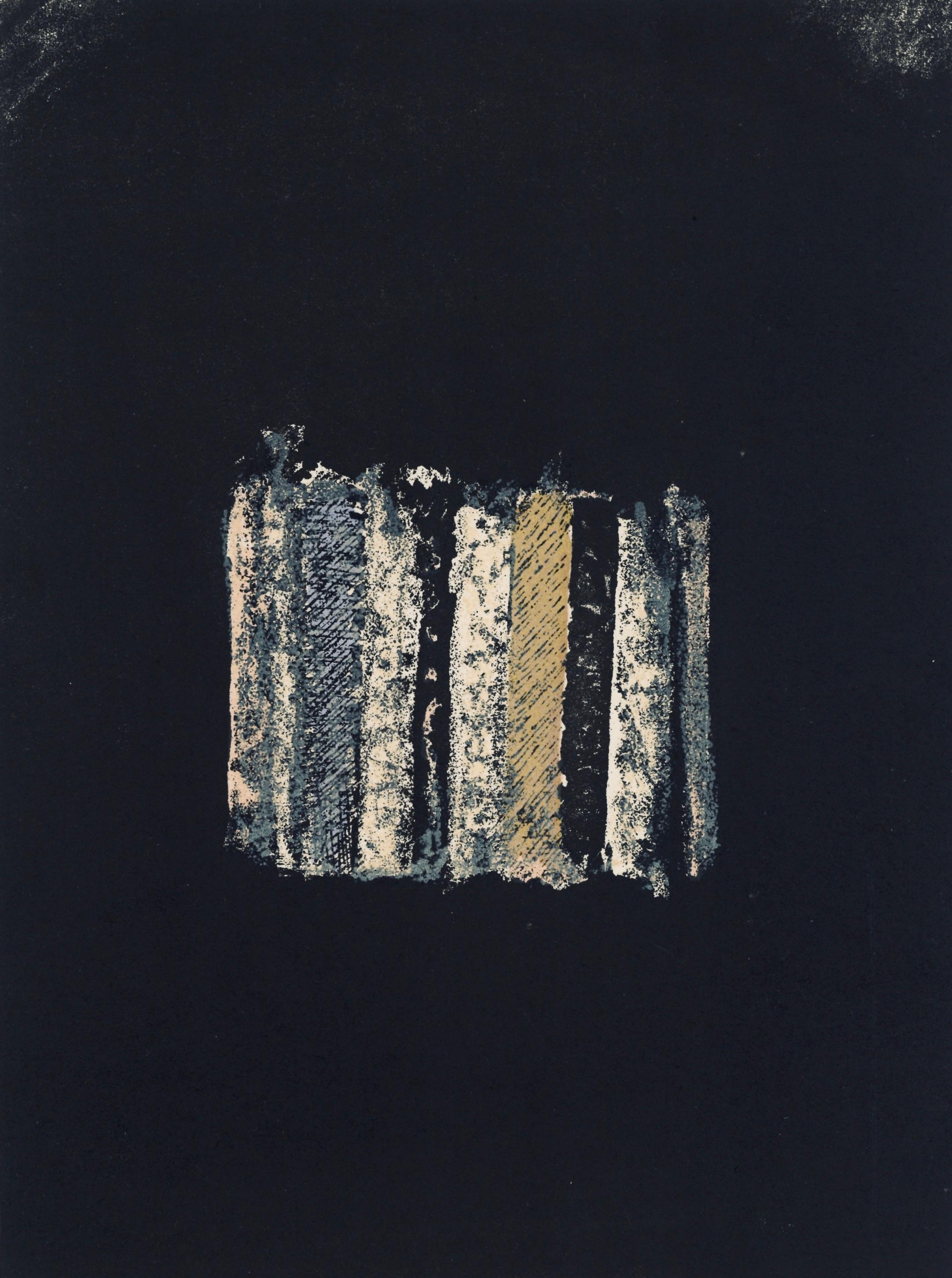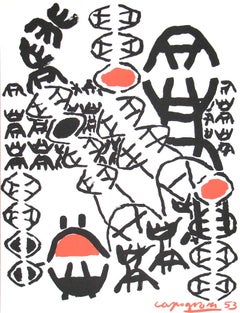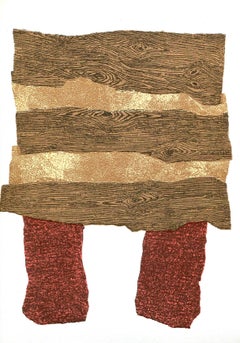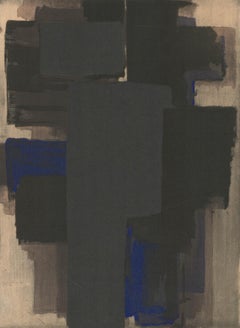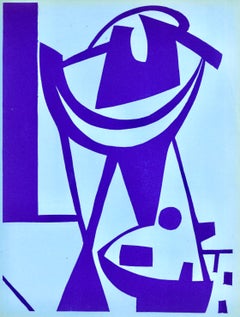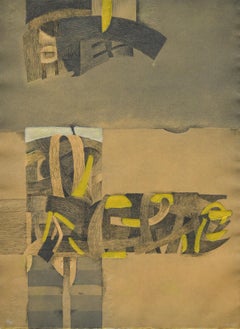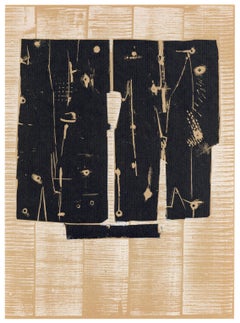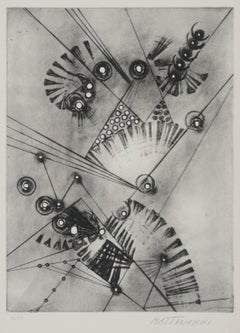Articles similaires à Composition, Société internationale d'art XXe siècle
Vous voulez plus d'images ou de vidéos ?
Demander au vendeur plus d'images ou de vidéos
1 sur 7
Pietro ConsagraComposition, Société internationale d'art XXe siècle1959
1959
622,46 €
778,08 €20 % de remise
À propos de cet article
Gravure sur bois sur papier vélin. Taille du papier : 12,4 x 9,65 pouces. Inscription : Non signé et non numéroté, tel que publié. Notes : Extrait de l'album, XXe siècle, Nouvelle série, XXIe Année, N° 13, Noël 1959, Cahiers d'Art publiés sous la direction de Gualtieri di San Lazzaro, 1959. Publié par la Société Internationale d'Art XXe siècle, Paris, sous la direction de Gualtieri di San Lazzaro, éditeur, Paris ; imprimé par Mourlot Frères, Paris, 1959. Notes complémentaires : Extrait de l'article universitaire, "Promoting Original Prints, The Role of Gualtieri di San Lazzaro and XXe Siècle" par Valerie Holman, publié dans Print Quarterly, XXXIII, 2016, 2. Jusqu'à récemment, très peu d'écrits ont été consacrés à l'auteur et éditeur d'art italien Gualtieri di San Lazzaro (1904-75), Pourtant, pendant 50 ans, il a chroniqué la vie et l'œuvre d'artistes contemporains, produit des monographies d'une qualité exceptionnelle et diffusé des estampes originales de peintres et de sculpteurs modernes par le biais de son périodique le plus connu, XXe Siècle. Bien que relativement peu connu au Royaume-Uni, San Lazzaro fait partie de la demi-douzaine de grands éditeurs d'art du milieu du XXe siècle qui, avec son modèle Ambroise Vollard (1866-1939) et ceux de sa génération, Christian Zervos (1889-1970), Tériade (1889-1983) et Albert Skira (1904-73), ont choisi de s'installer à Paris, qu'ils ont considéré tout au long de leur vie comme le centre du monde de l'art.....XXe Siècle, un périodique illustré, a été lancé en 1938 et imprimé à environ 2 000 exemplaires, chaque numéro contenant à la fois des photographies et des reproductions en quadrichromie d'un large éventail d'images visuelles allant des chefs-d'œuvre de la peinture occidentale aux estampes populaires d'Extrême-Orient. Son grand format, son design vivant et l'intégration étroite du texte et de l'image ont immédiatement frappé, mais sa caractéristique la plus innovante, introduite à la suggestion de Hans Arp (1886-1966), était l'inclusion d'estampes originales d'artistes contemporains dans chaque numéro. Avec un attrait évident pour les collectionneurs, XXe Siècle a également été conçu pour faire découvrir la peinture et la sculpture contemporaines à un public plus large et international, grâce à des reproductions en couleur de bonne qualité et à l'immédiateté des estampes originales. D'un prix comparable à celui des Cahiers d'Art, les premiers numéros de XXe Siècle ont été rapidement épuisés. Bien que les préférences esthétiques de San Lazzaro tendent vers l'abstraction lyrique, il précise que XXe Siècle est non partisan [la publication a cessé pendant la Seconde Guerre mondiale]....en 1951, San Lazzaro relance XXe Siècle avec des numéros thématiques basés sur les matériaux ou centrés sur un sujet d'actualité dans les arts visuels, en particulier en Europe : les concepts d'espace, de matière, de monochromie, de marquage et de signe. En effet, alors que San Laz-zaro s'était initialement concentré sur les peintres et sculpteurs parisiens, son objectif était de créer un réseau international, de faire connaître le travail des artistes français en Italie et des artistes italiens en France, et d'étendre ensuite cet axe bilatéral au monde anglophone. Les artistes représentés dans le numéro I+I par une estampe originale étaient tous connus en tant que sculpteurs : Arp, HENRY, Henry Moore (1898-186) et Marino Marini, San Lazzaro ne cherchait pas seulement à montrer aux lecteurs l'éventail complet de l'œuvre d'un artiste, mais aussi à encourager la production d'estampes, une stimulation très appréciée, par exemple, par Magnelli..... Souffrant d'une santé défaillante, San Lazzaro perd en 1968 le contrôle global de XXe Siècle au profit de Léon Amiel, un imprimeur-éditeur qui avait apporté son soutien financier et aidé à la distribution en Amérique." Les numéros thématiques ont cessé et ont été remplacés par un "panorama" de l'année, mais San Lazzaro est toujours actif en tant qu'éditeur de livres et d'albums d'estampes....Peu de temps après sa mort, San Lazzaro lui-même a fait l'objet de deux expositions : Omaggio a XXe Siècle" à Milan en décembre 1974, centrée sur les œuvres graphiques des artistes les plus proches de lui à la fin de sa vie, tandis que "San Laz-zaro et ses Amis" au Musée d'Art Moderne de la Ville de Paris en 1975 présentait les œuvres de tous ceux dont il avait promu le travail pendant plus de 50 ans : Arp, Calder (1898-1976), Capogrossi, Chagall, Sonia Delau-nay, Dubuffet, Estève, Lucio Fontana (1899-1968), Gili-oli (1911-77), Magnelli, Marini, Miró, Moore et Poliakoff. L'un de ses plus proches collaborateurs a vu dans cette exposition un portrait indirect de San Lazzaro, un homme complexe dont la modestie et la réserve masquaient sa volonté inébranlable d'étendre l'appréciation internationale de l'art contemporain et de rapprocher le public de sa création par le biais de l'imprimé.
PIETRO CONSAGRA (1920-2005) était un sculpteur italien. En 1947, il fait partie des membres fondateurs du groupe d'artistes Forma 1, qui prône à la fois le marxisme et l'abstraction structurée. En 1947, avec Carla Accardi, Ugo Attardi, Piero Dorazio, Mino Guerrini, Achille Perilli, Antonio Sanfilippo [it] et Giulio Turcato, Consagra fonde le groupe d'artistes Forma 1, qui prône à la fois le marxisme et l'abstraction structurée. Peu à peu, le travail de Consagra commence à trouver un public. Travaillant principalement le métal, puis le marbre et le bois, ses reliefs minces et grossièrement sculptés ont commencé à être collectionnés par Peggy Guggenheim et d'autres importants mécènes. Il a participé onze fois à la Biennale de Venise entre 1950 et 1993, et a remporté en 1960 le prix de sculpture de l'exposition. Au cours des années 1960, il est associé au groupe Continuità, une émanation de la Forma I, et en 1967, il enseigne à la School of Arts de Minneapolis. Des commandes importantes lui ont permis de commencer à travailler à une échelle plus monumentale, et certaines de ses œuvres ont été installées dans la cour du ministère des affaires étrangères à Rome et au Parlement européen à Strasbourg. Ses œuvres figurent dans les collections de la Tate Gallery, à Londres, du Museo Cantonale d'Arte de Lugano et du Musée d'art moderne de Paris, ainsi que de la National Gallery of Art de Washington, D.C. Consagra est retourné en Sicile où il a sculpté un certain nombre d'œuvres importantes au cours des années 1980. Avec le sénateur Ludovico Corrao, il a contribué à la création d'un musée en plein air dans la nouvelle ville de Gibellina, après la destruction de l'ancienne ville lors du tremblement de terre de 1968. Consagra a dessiné les grilles de l'entrée de la ville, le bâtiment nommé "Meeting" et les grilles du cimetière, où il a été enterré par la suite. En 2018, une sculpture de Consagra, Ferro trasparente bianco V, a été vendue 201 973 USD chez Phillips London, établissant un record mondial pour l'artiste.
- Créateur:Pietro Consagra (1920 - 2005, Italien)
- Année de création:1959
- Dimensions:Hauteur : 31,5 cm (12,4 po)Largeur : 24,52 cm (9,65 po)
- Support:
- Mouvement et style:
- Période:
- État:
- Adresse de la galerie:Southampton, NY
- Numéro de référence:1stDibs : LU1465216495382
À propos du vendeur
4,9
Vendeur Platine
Vendeurs premium dont la note est supérieure à 4,7 et le délai de réponse de 24 heures maximum
Établi en 1978
Vendeur 1stDibs depuis 2021
1 241 ventes sur 1stDibs
Temps de réponse habituel : <1 heure
- ExpéditionRecherche du devis...Expédition depuis : Southampton, NY
- Politique des retours
Certaines parties de cette page ont été traduites automatiquement. 1stDibs ne garantit pas l'exactitude des traductions. L'anglais est la langue par défaut de ce site web.
Plus d'articles de ce vendeur
Tout afficherComposition, Société internationale d'art XXe siècle
Par Giuseppe Capogrossi
Lithographie sur papier vélin. Taille du papier : 12,4 x 9,65 pouces. Inscription : Signé dans la plaque et non numéroté, tel que publié. Notes : Extrait de l'album, XXe siècle, Nouv...
Catégorie
années 1950, Moderne, Estampes - Figuratif
Matériaux
Lithographie
692 € Prix de vente
20 % de remise
Livraison gratuite
Composition, Société internationale d'art XXe siècle
Par Enrico Baj
Lithographie sur papier vélin. Taille du papier : 12,4 x 9,65 pouces. Inscription : Non signé et non numéroté, tel que publié. Notes : Extrait de l'album, XXe siècle, Nouvelle série,...
Catégorie
années 1960, Moderne, Estampes - Abstrait
Matériaux
Lithographie
692 € Prix de vente
20 % de remise
Livraison gratuite
Sans titre, Société internationale d'art XXe siècle
Par Pierre Soulages
Lithographie, pochoir sur papier vélin. Taille du papier : 12,4 x 9,65 pouces. Inscription : Non signé et non numéroté, tel que publié. Notes : Extrait de l'album, XXe siècle, Nouvel...
Catégorie
années 1950, Moderne, Estampes - Abstrait
Matériaux
Lithographie
1 735 € Prix de vente
20 % de remise
Livraison gratuite
Composition, Société internationale d'art XXe siècle
Par Jean Hélion
Linogravure sur papier vélin. Taille du papier : 12,4 x 9,65 pouces. Inscription : Non signé et non numéroté, tel que publié. Notes : Extrait de l'album, XXe siècle, Chroniques du jo...
Catégorie
années 1930, Moderne, Estampes - Abstrait
Matériaux
Linogravure
622 € Prix de vente
20 % de remise
Livraison gratuite
Composition, Société internationale d'art XXe siècle
Par César Baldaccini
Lithographie sur papier vélin. Taille du papier : 12,4 x 9,65 pouces. Inscription : Non signé et non numéroté, tel que publié. Notes : Extrait de l'album, XXe siècle, Nouvelle série,...
Catégorie
années 1960, Surréalisme, Estampes - Abstrait
Matériaux
Lithographie
622 € Prix de vente
20 % de remise
Livraison gratuite
Composition, Société internationale d'art XXe siècle
Par Pierre Alechinsky
Lithographie sur papier vélin. Taille du papier : 12,4 x 9,65 pouces. Inscription : Non signé et non numéroté, tel que publié. Notes : Extrait de l'album, XXe siècle, Nouvelle série,...
Catégorie
années 1960, Moderne, Estampes - Figuratif
Matériaux
Lithographie
622 € Prix de vente
20 % de remise
Livraison gratuite
Suggestions
1959 Pietro Consagra « Les couches »
Par Pietro Consagra
Taille du papier : 12.25 x 9.5 inches ( 31.115 x 24.13 cm )
Taille de l'image : 12.25 x 9.5 inches ( 31.115 x 24.13 cm )
Encadré : Non
Condit : A- : Presque neuf, très légères tra...
Catégorie
années 1950, Moderne, Estampes et éditions
Matériaux
Lithographie
104 € Prix de vente
20 % de remise
Untitled Edition 7 sur 99
Par Fernando de Szyszlo
Fernando de Szyszlo était un peintre péruvien surtout connu pour l'utilisation de l'imagerie Pre-Columbian et d'une palette sourde. L'art de De Szyszlo était une tentative de réinven...
Catégorie
XXe siècle, Estampes - Abstrait
Matériaux
Gravure, Eau-forte
gravure sur bois originale
Par Pietro Consagra
Support : gravure sur bois originale. Il s'agit d'une impression richement encrée imprimée sur papier vergé, exécutée pour le numéro de Noël du XXe Siecle (n° 13), difficile à trouve...
Catégorie
années 1950, Estampes - Figuratif
Matériaux
Gravure sur bois
Composition
Par Umberto Mastroianni
Composition
Gravure originale au carborundum, C.C. 1970
Signé : Mastroianni au crayon en bas à droite (voir photo)
Edition : 100 (76/100) (voir photo)
Imprimé sur un papier épais
C...
Catégorie
années 1970, Moderne, Estampes - Abstrait
Matériaux
Eau-forte
Composition
Par Antoni Clavé
Lithographie
38.00 cm. x 27.00 cm. 14.96 in. x 10.63 in. (image)
Signé par l'artiste au crayon
Ref : LCD1506
Catégorie
années 1970, Abstrait, Estampes - Abstrait
Matériaux
Lithographie
Composition abstraite sans titre
Fred Alfred Theophil Fathwinter
Composition abstraite sans titre
Monotype
Année : 1969
signé, numéroté et daté à la main
Taille : 11.0×3.9in on 11.6×8.3in
L'ACO a fourni
Réf. : 924...
Catégorie
années 2010, Moderne, Estampes et éditions
Matériaux
Monotype
96 € Prix de vente
30 % de remise

